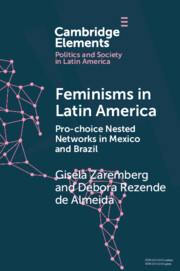Element contents
Feminisms in Latin America
Published online by Cambridge University Press: 04 November 2022
Summary
- Type
- Element
- Information
- Online ISBN: 9781108919258Publisher: Cambridge University PressPrint publication: 01 December 2022
References
- 7
- Cited by



